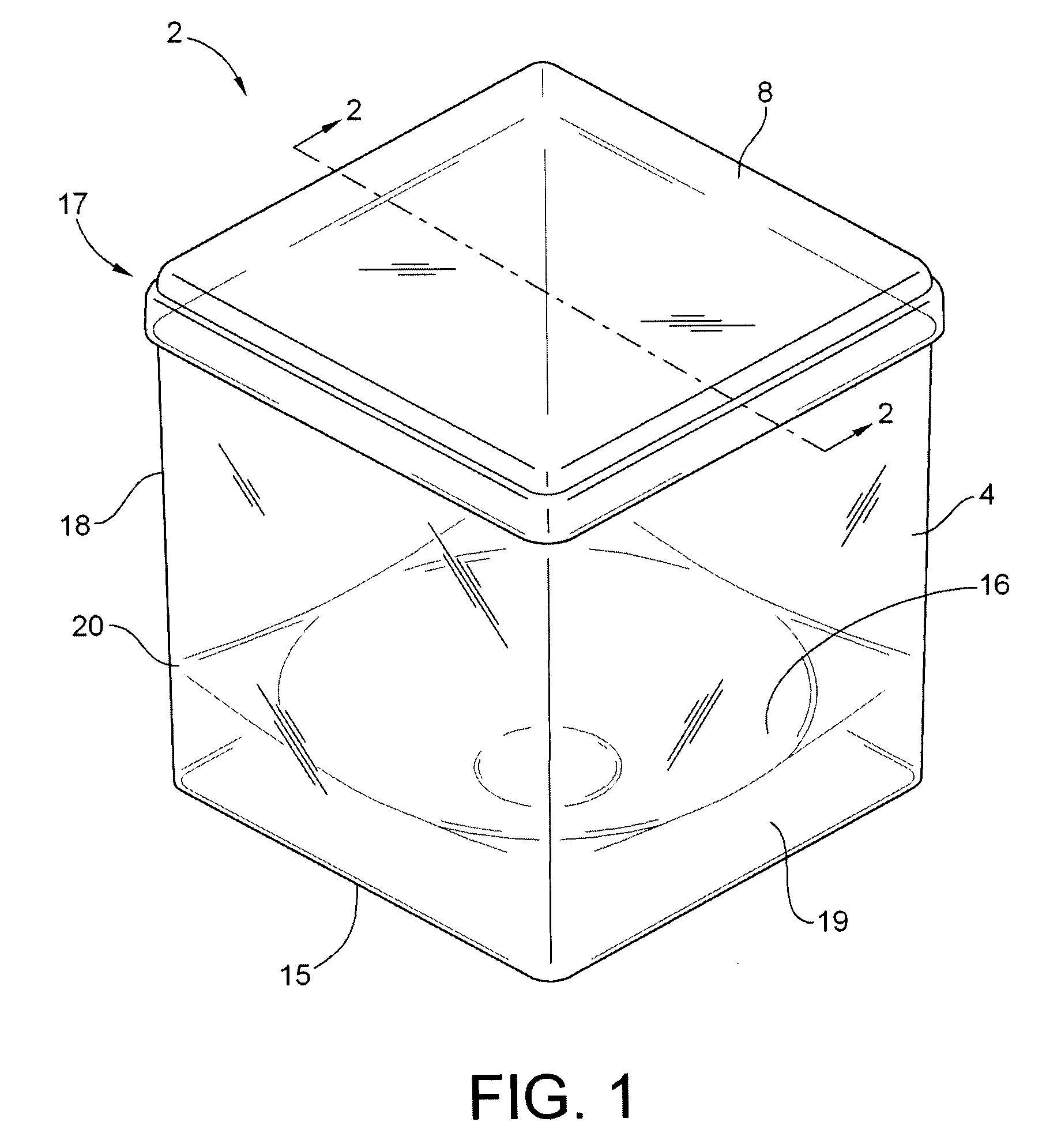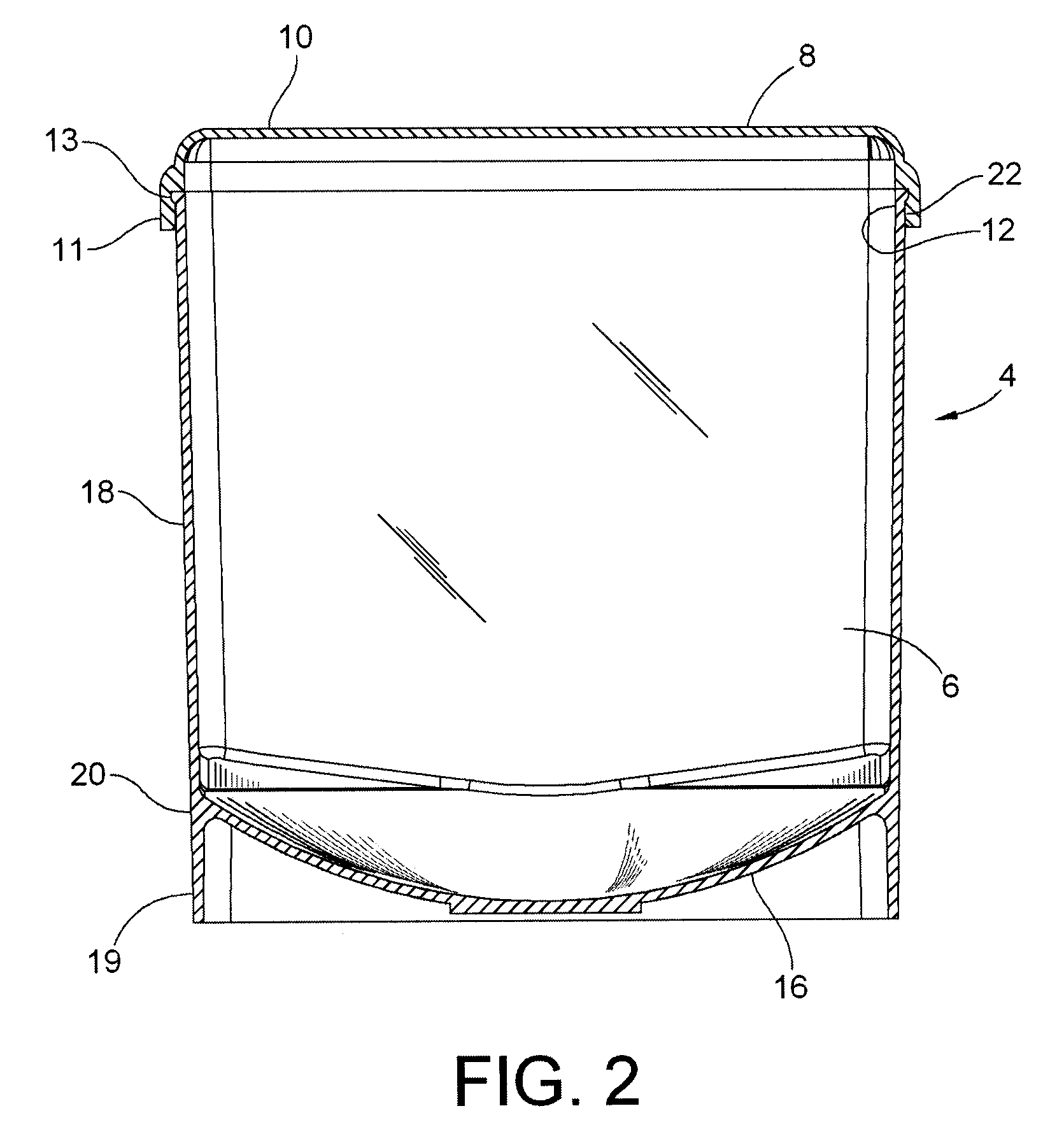Specimen retention container
a technology for specimens and containers, applied in the field of specimen storage containers, can solve the problems of inaccurate images, inaccurate margin analysis, and distortion of specimens, and achieve the effects of reducing the likelihood, reducing distortion of tissue specimens, and being convenient to us
- Summary
- Abstract
- Description
- Claims
- Application Information
AI Technical Summary
Benefits of technology
Problems solved by technology
Method used
Image
Examples
Embodiment Construction
[0022]Referring now to the drawings, FIGS. 1-3 illustrate an assembled view of the components of the specimen retention container 2, which includes a body 4 and a separate lid 8.
[0023]The body 4 is generally boxed-shaped and includes four substantially parallel walls 18 defining an interior 6 of the body 4, a lower end 15 and an open upper end 17. The lower end 15 is defined by a substantially-concave floor 16, which is positioned opposite of the open end 17 and effectively forms an impermeable closed lower end 15. The concave floor 16 is joined to the outer walls 18 at junction 20 at variable positions distant from the open end 17. The upper open end 17 of the container is defined by a lip 2 which extends outwardly from the walls 18 for mating engagement with the lid 8.
[0024]As illustrated in FIG. 1, the junction 20 forms the upper edge of the substantially-concave floor 16. In this configuration, the lower end 15 of the container 2 can sit on a flat surface or plane, parallel and ...
PUM
 Login to View More
Login to View More Abstract
Description
Claims
Application Information
 Login to View More
Login to View More - R&D
- Intellectual Property
- Life Sciences
- Materials
- Tech Scout
- Unparalleled Data Quality
- Higher Quality Content
- 60% Fewer Hallucinations
Browse by: Latest US Patents, China's latest patents, Technical Efficacy Thesaurus, Application Domain, Technology Topic, Popular Technical Reports.
© 2025 PatSnap. All rights reserved.Legal|Privacy policy|Modern Slavery Act Transparency Statement|Sitemap|About US| Contact US: help@patsnap.com



